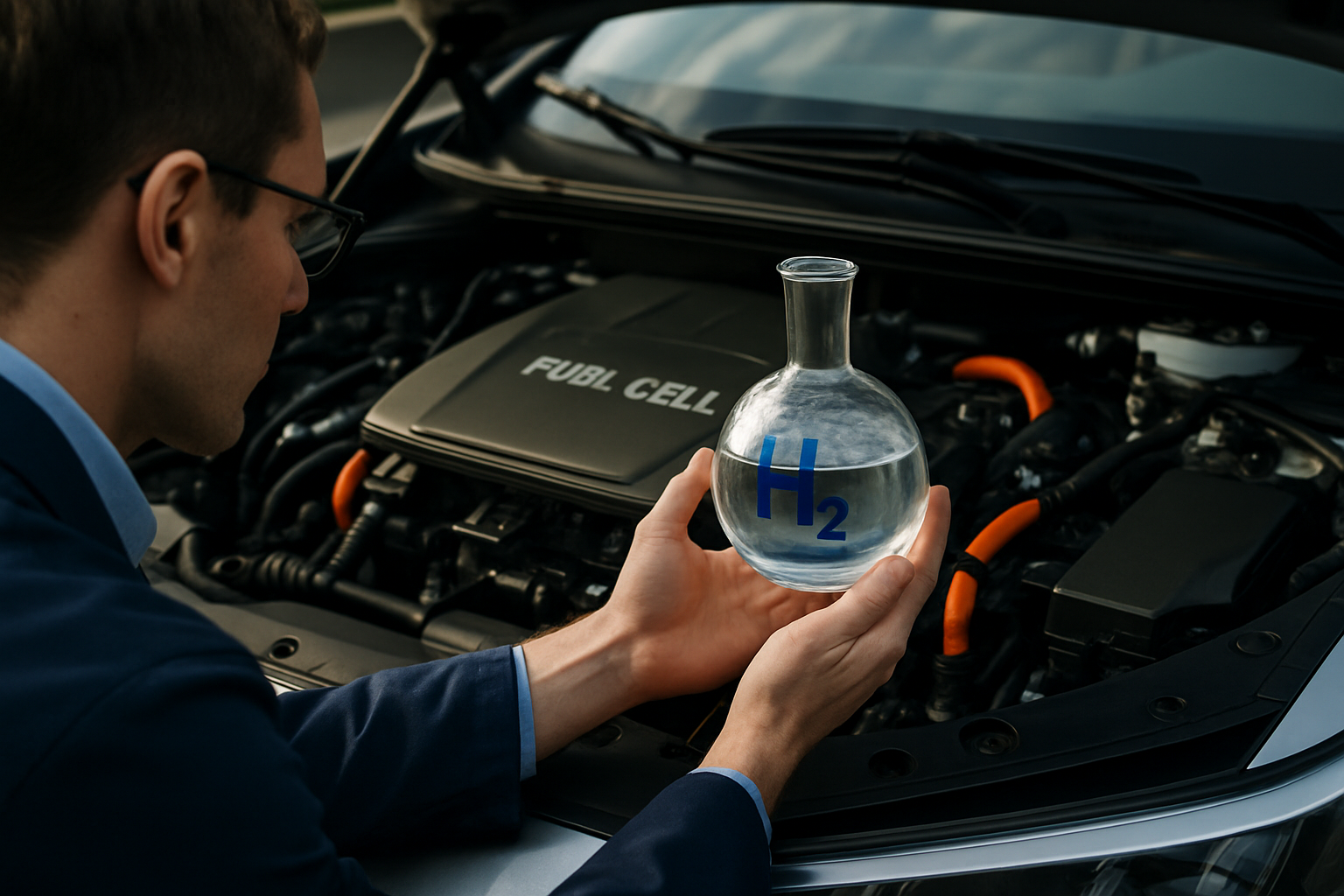Hydrogen Fuel Cells: The Quiet Revolution in Automotive Power
The automotive world stands on the brink of a paradigm shift, with hydrogen fuel cell technology emerging as a formidable contender in the race for sustainable transportation. This innovative power source promises to combine the convenience of traditional fueling with zero-emission driving, potentially reshaping our roads and our relationship with personal mobility. As we delve into the intricacies of hydrogen fuel cells, we'll explore how this technology could redefine the future of automotive propulsion and why it's capturing the attention of manufacturers and environmentalists alike.

The fuel cell itself consists of an anode, a cathode, and an electrolyte membrane. Hydrogen is fed into the anode, where it’s split into protons and electrons. The protons pass through the membrane to the cathode, while the electrons are forced through an external circuit, creating an electric current. At the cathode, these components combine with oxygen from the air to form water – the only byproduct of this remarkable process.
From Laboratory to Highway
The journey of hydrogen fuel cells from scientific curiosity to automotive application has been long and fraught with challenges. Early experiments with the technology date back to the 1800s, but it wasn’t until the mid-20th century that NASA’s space program brought fuel cells into the spotlight, using them to power spacecraft.
Automotive manufacturers began seriously exploring fuel cell vehicles (FCVs) in the 1990s, with companies like General Motors and Toyota leading the charge. However, the path to commercialization has been slow, hindered by high production costs, lack of infrastructure, and competition from other alternative fuel technologies.
Despite these hurdles, recent years have seen significant strides in FCV development. The Toyota Mirai, Honda Clarity Fuel Cell, and Hyundai NEXO have all entered the market, offering consumers a glimpse into a hydrogen-powered future. These vehicles boast impressive ranges, quick refueling times, and the environmental credentials of zero tailpipe emissions.
Infrastructure: The Missing Link
For hydrogen fuel cell vehicles to gain widespread adoption, a robust fueling infrastructure is crucial. Currently, the lack of hydrogen filling stations remains one of the technology’s most significant barriers. Countries like Japan, Germany, and South Korea are leading the way in building hydrogen refueling networks, but global coverage remains sparse.
Developing this infrastructure presents unique challenges. Hydrogen must be produced, transported, and stored safely, all while keeping costs competitive with traditional fuels. The chicken-and-egg dilemma persists: without enough FCVs on the road, there’s little incentive to build stations, but without stations, consumers are hesitant to purchase FCVs.
Governments and private sector partnerships are working to break this cycle. California, for instance, has committed to having 200 hydrogen stations by 2025, while Japan aims for 900 stations by 2030. These initiatives are crucial for creating the critical mass needed for widespread FCV adoption.
Environmental Implications and Green Hydrogen
While hydrogen fuel cells produce zero emissions at the point of use, the environmental impact of hydrogen production is a critical consideration. Currently, most hydrogen is produced from natural gas through a process called steam methane reforming, which does generate carbon emissions.
The holy grail of the hydrogen economy is green hydrogen – produced through electrolysis powered by renewable energy sources like wind or solar. This method creates truly zero-emission hydrogen, from production to consumption. As renewable energy capacity grows and electrolysis technology improves, green hydrogen is becoming increasingly viable, promising to make FCVs a truly sustainable transport solution.
The Road Ahead: Challenges and Opportunities
As hydrogen fuel cell technology matures, it faces both obstacles and opportunities. Cost remains a significant hurdle, with fuel cell systems and hydrogen production still more expensive than many alternatives. However, as with any emerging technology, economies of scale and continued research and development are expected to drive costs down over time.
Another challenge lies in public perception and education. Many consumers are unfamiliar with fuel cell technology or harbor safety concerns about hydrogen. Overcoming these barriers will require concerted efforts in marketing, education, and demonstration projects to showcase the technology’s benefits and safety features.
On the opportunity side, hydrogen fuel cells offer several advantages over battery electric vehicles, particularly for heavy-duty applications. The quick refueling times and long ranges make FCVs attractive for long-haul trucking, buses, and other high-utilization vehicles where downtime is costly.
Moreover, as countries strive to decarbonize their economies, hydrogen is increasingly seen as a vital component of a sustainable energy mix. Its ability to store and transport energy makes it a valuable complement to intermittent renewable sources, potentially creating synergies between the automotive sector and the broader energy system.
A Hydrogen-Powered Horizon
The automotive industry stands at a crossroads, with multiple technologies vying to power the vehicles of tomorrow. While battery electric vehicles have gained significant traction, hydrogen fuel cells offer a compelling alternative that addresses some of the limitations of battery technology.
As infrastructure expands, costs decrease, and green hydrogen production scales up, we may well see a future where hydrogen fuel cell vehicles play a significant role in our transportation ecosystem. The journey to this hydrogen-powered horizon is complex and challenging, but the potential rewards – in terms of environmental benefits, energy security, and technological advancement – make it a path worth pursuing.
The quiet revolution of hydrogen fuel cells in the automotive world is gaining momentum. As we navigate the transition to sustainable mobility, this technology offers a promising route to cleaner, more efficient transportation. The road ahead may be long, but the destination – a world of zero-emission vehicles powered by the most abundant element in the universe – is undoubtedly enticing.





